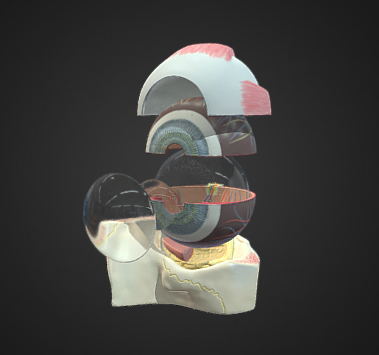International Anatomy Day 2020
For International Anatomy Day, we take a look at the advancement in modelling technology of the human eye.
Human anatomy, the study of the structure of the human body, has been crucial to developments in modern medical science. The past decade has seen technological developments in medical imaging that have greatly advanced visual representations of the interior of the body and revealed how little we genuinely understand our detailed anatomy.
International Anatomy Day aims to provide anatomists with an opportunity to both celebrate anatomical advances, as well as to convey the need for more research and development in the field.
An Eye-Opening Experience

This is an interactive 3D model of the eye developed by the Imaging and Posters Unit in the Department of Anatomy and Neuroscience. It is currently being used to teach anatomy in an online environment.
3D scanners such as the one used to create this 3D eye, use directional light to calculate the characteristics of a surface, while hundreds of photographs are used to wrap around the model giving it it's realistic colour. It provides a great example of how we can use new technology to help us teach anatomy online, especially during COVID restrictions that prevent students from attending practical classes in person.
1983 Eye Diagram
The University of Melbourne is an international leader in anatomical research and shaping the way the discipline is taught through new learning resources.

The image above is an example of what students studying anatomy in 1983 received while learning about the intricacies of the human eye. Notice the difference that 40 years can make in our ability to model the human body clearly and precisely, allowing for advances in our knowledge and understanding.
Why 15 October?
15 October marks the anniversary of the death of Andreas Vesalius in 1564, who is considered to be the founder of modern human anatomy. The observations Vesalius made overturned misconceptions in anatomy that had prevailed for centuries.